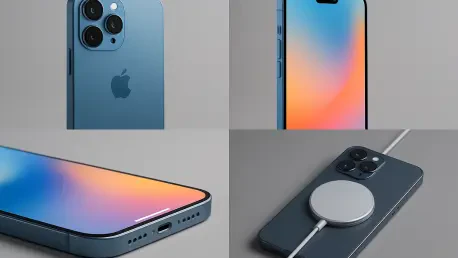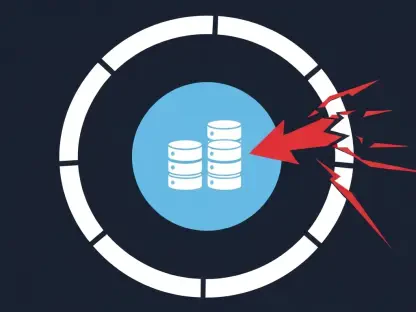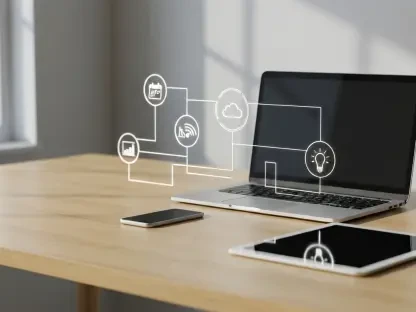I’m thrilled to sit down with Oscar Vail, a renowned technology expert with a deep passion for cutting-edge fields like quantum computing, robotics, and open-source projects. With his finger on the pulse of the tech industry, Oscar has a unique perspective on where mobile technology is headed. Today, we’re diving into the much-anticipated iPhone 17 series, exploring everything from design innovations to performance upgrades and how these devices might shape Apple’s future lineup. Let’s unpack the rumors, predictions, and potential game-changers with Oscar’s expert insights.
What can you tell us about the iPhone 17 series lineup and the models expected to launch soon?
Well, based on the latest leaks and Apple’s typical release patterns, we’re looking at four models for the iPhone 17 series, likely to be unveiled around September 9. There’s the standard iPhone 17, the iPhone 17 Air—a new addition—the iPhone 17 Pro, and the flagship iPhone 17 Pro Max. Each seems tailored to different user needs, from budget-conscious buyers to those seeking top-tier performance. The introduction of the Air model is particularly intriguing as it appears to replace the Plus variant, suggesting Apple is aiming for a slimmer, perhaps more style-focused option in the mid-range.
How do you see the iPhone 17 Air fitting into Apple’s broader strategy for their smartphone portfolio?
I think the iPhone 17 Air is a strategic move by Apple to capture a segment of users who want a larger screen without the bulk or the premium price tag of the Pro models. Rumors suggest it’ll have a 6.7-inch display, similar to the current Plus model, but with a thinner design. This could appeal to those prioritizing portability and aesthetics over raw power. It’s likely a response to market trends where sleek, lightweight devices are gaining traction, and it diversifies Apple’s lineup to compete with slimmer flagship designs from other brands.
What are the standout display features predicted for the iPhone 17 series across the different models?
From what I’ve gathered, the displays are sticking to familiar territory in terms of size for most models—6.1 inches for the base iPhone 17, 6.7 inches for the Air, 6.3 inches for the Pro, and 6.9 inches for the Pro Max. The big news, though, is the rumored upgrade to a 120Hz refresh rate for the base model, which would be a huge leap from the 60Hz on the iPhone 16. That smoother scrolling and responsiveness could make the standard model much more appealing. The Pro models are expected to maintain their 120Hz displays, with no major changes in resolution anticipated across the board.
Let’s talk cameras—what upgrades are rumored for the iPhone 17 series, especially with the front-facing lens?
The camera department is where things get exciting. Across all iPhone 17 models, there’s a strong rumor of a front-facing camera upgrade from 12MP to 24MP. That’s a significant jump, promising sharper selfies and better low-light performance, which is something users have been asking for. It also aligns with Apple’s push to enhance video calling and content creation features. This uniform upgrade suggests Apple is prioritizing consistency in user experience, no matter which model you pick.
For the Pro models, there’s buzz about a major telephoto camera improvement. Can you elaborate on that?
Absolutely, the iPhone 17 Pro and Pro Max are rumored to get a 48MP telephoto camera, a massive step up from the 12MP on the current Pro models. This would mean much more detailed zoomed shots and potentially better hybrid zoom capabilities. While there’s no clear consensus on whether the optical zoom will stick to 5x or push beyond, this upgrade alone could redefine mobile photography for professionals and enthusiasts who rely on telephoto for distant subjects. It’s a clear signal that Apple wants to dominate in the camera tech space.
Shifting to performance, what can you share about the expected chipsets in the iPhone 17 series?
Performance-wise, Apple seems to be sticking to its formula of incremental but impactful upgrades. The base iPhone 17 is expected to feature the A19 chip, while the Air, Pro, and Pro Max are likely to get the A19 Pro. The distinction might come down to GPU cores, with the Pro variant offering extra power for tasks like gaming and video editing. These chips, built on cutting-edge manufacturing processes, should bring better efficiency and speed, ensuring the devices handle everything from everyday apps to intensive workloads with ease.
How do the battery capacities and design choices vary across the iPhone 17 models based on current predictions?
Battery predictions are quite varied. The base iPhone 17 is expected to have at least a 3,561mAh battery, possibly larger with design optimizations like thinner motherboards. The Pro model might hover around 3,582mAh or slightly more, while the Pro Max could hit around 5,000mAh—a big jump from last year. The Air, however, is rumored to have a smaller battery, under 3,000mAh, likely due to its slim design. This trade-off might prioritize form over endurance, which could be a point of contention for power users.
What’s your forecast for the impact of the iPhone 17 series on the smartphone market in the coming year?
I think the iPhone 17 series will set a new benchmark, especially with features like the 120Hz display on the base model and the camera upgrades on the Pro variants. The introduction of the Air could redefine the mid-tier segment, pushing competitors to focus on thinner, lighter designs. Apple’s ability to balance innovation with consistency will likely keep them ahead, but I’m curious to see how battery life and pricing play out—those could be deciding factors for many consumers. Overall, I expect this lineup to strengthen Apple’s dominance while sparking some fierce competition.









